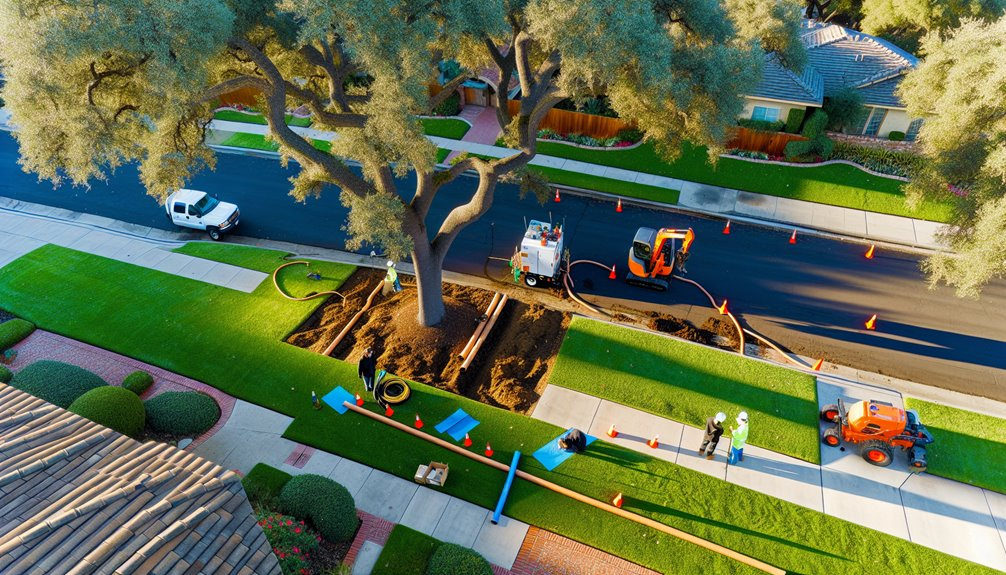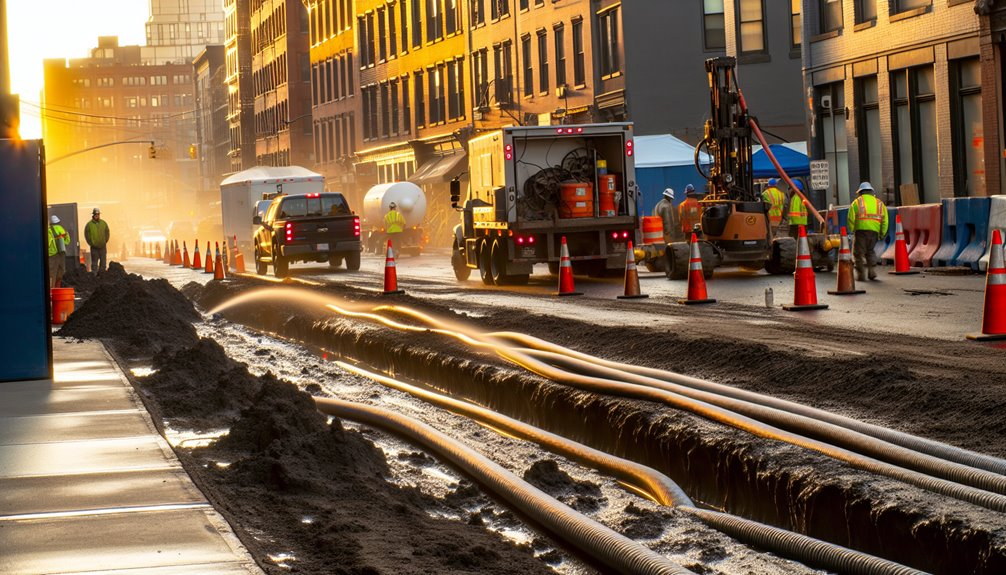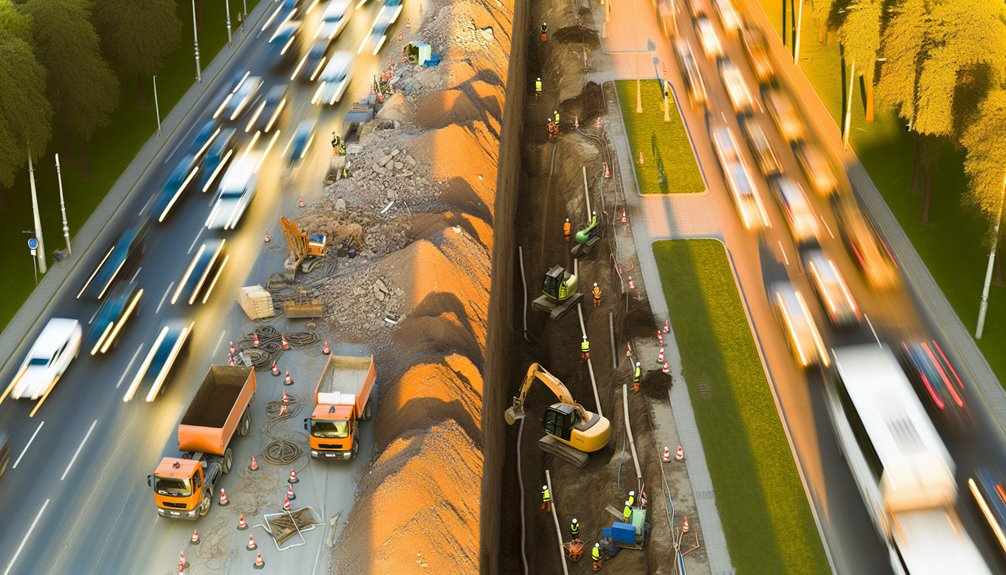If you need utilities installed near mature trees, you don’t trench—you steer beneath them. Horizontal directional drilling threads a narrow bore under critical root zones, suspends cuttings with drilling fluid, and limits compaction with confined entry and exit pits. With arborist input, real-time guidance, and low-pressure circulation, you avoid hydrofracture and root shear while protecting soil biology and hardscapes. You’ll see how planning, standards, and coordination keep canopy, roots, and landscapes intact—if you set it up right.
What Is Horizontal Directional Drilling and How It Works
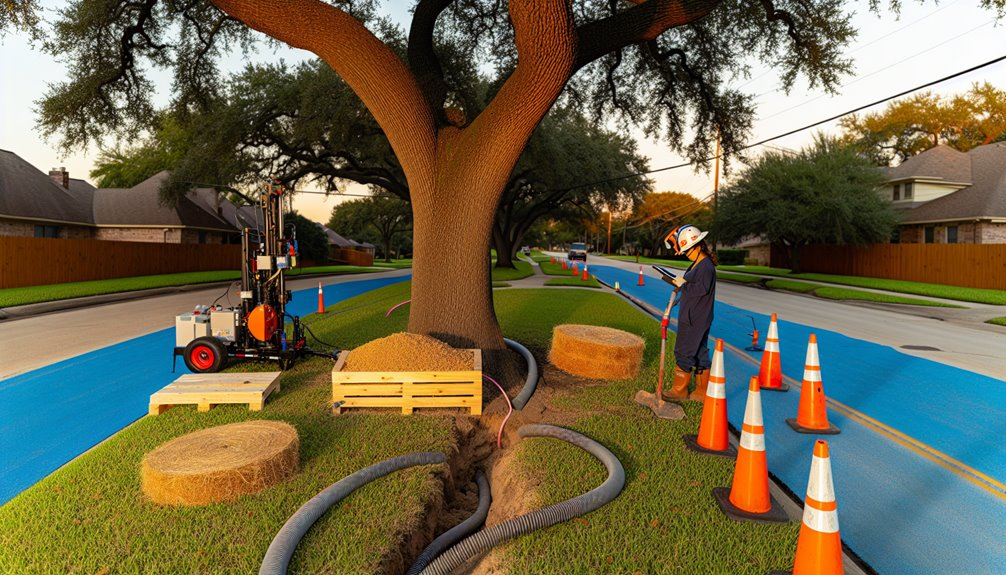
Picture guiding a drill bit beneath a root zone instead of cutting through it—that’s horizontal directional drilling (HDD).
You plan a bore path that respects critical root areas, then mobilize directional rigs sized to your utility and site constraints.
You launch a steerable drill head, track it with a locator, and maintain bore accuracy with real-time corrections.
Drilling fluid stabilizes the hole, transports cuttings, and cools tooling.
Next, you enlarge the pilot hole through staged pilot reaming, selecting reamers that match soil conditions and pipe diameter.
You monitor pressure and returns to prevent losses.
Finally, you pull back the product pipe with a swivel to avoid torque transfer.
Throughout, you enforce exclusion zones, verify utility marks, and document decisions, keeping trees—and your crew—safe.
Why HDD Is Gentler on Tree Roots and Soil Structure
Often, HDD spares tree roots because you steer beneath the critical root zone instead of trenching through it, limiting disturbance to a narrow, controlled bore. You guide the drill head with real‑time telemetry, holding depth so fine feeder roots and mycorrhizae stay intact. Drilling fluids suspend cuttings, lubricate the bore, and reduce torque, lowering shear forces on surrounding soil.
Because you’re displacing rather than excavating, you minimize Soil compaction at the surface and preserve pore space essential for gas exchange and infiltration. Entry and exit pits remain small, supporting Root preservation by confining access to defined pads with load‑spreaders. You also avoid drying out root plates, since the canopy‑to‑soil continuum stays connected. The result: safer utilities, healthier trees, and a crew aligned around careful stewardship.
Planning Routes to Avoid Critical Root Zones and Hardscapes
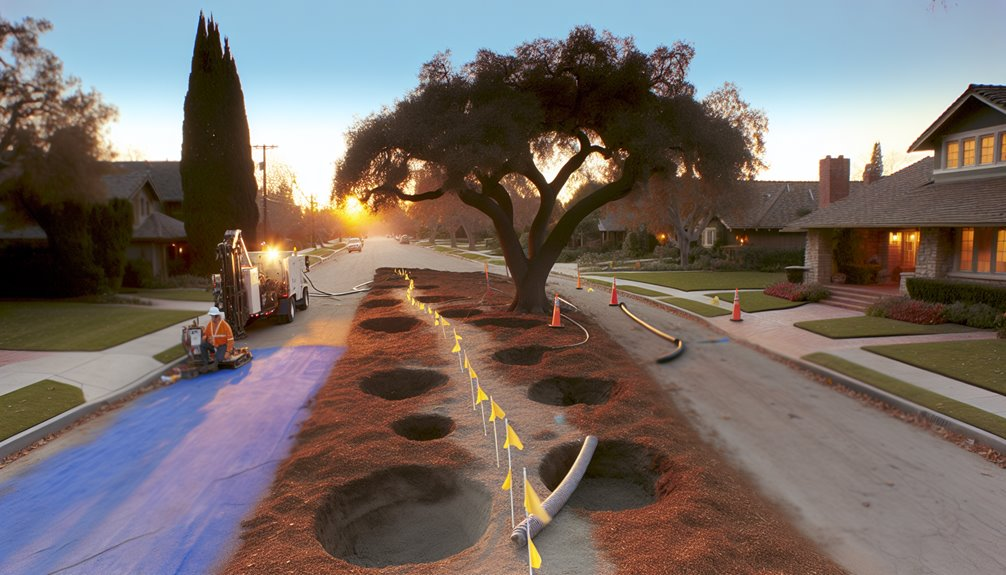
Before locating any bore path, map the critical root zones (CRZ) and hardscapes with survey‑grade GPS, utility locates, and arborist input, then set clearance envelopes that the route mustn’t breach.
You’ll anchor decisions in root mapping data, trunk diameter, species tolerance, and soil permeability, then compare options against utility setbacks and minimum bend radii.
Keep launch and exit pits outside CRZs and align depths to pass beneath major roots without clipping buttress zones.
- Shift alignments laterally to honor CRZ buffers, avoiding sidewalks, walls, and patios that transmit vibration and load.
- Adjust entry angle and depth profile to clear roots and utilities while maintaining annular pressure control.
- Stage contingency routes so crews can pivot quickly if probe shots or daylighting reveal conflicts.
Best Practices and Standards for Tree-Safe HDD Operations
Although every site differs, tree-safe HDD hinges on codified practices that protect root architecture, soil structure, and canopy stability while meeting utility standards.
You begin with arborist consultation and root mapping to define minimum stand-off distances and allowable bore depths. Follow ANSI A300 and ISA BMPs: maintain tool paths outside critical root zones, and keep bore crowns below the majority of structural roots.
Specify low-to-moderate drilling pressures, balanced fluid programs, and fine-grained steering to prevent hydrofracture and heave. Use vacuum excavation for entry/exit pits, and employ biodegradable drilling fluids with verified containment.
Calibrate tracking daily, log as-built profiles, and verify tolerances against plans. Stabilize spoils, dewater responsibly, and backfill with compatible soils.
Protect trunks and dripline soils from compaction using mats and limited-access equipment.
Coordinating Arborists, Utility Crews, and Inspectors
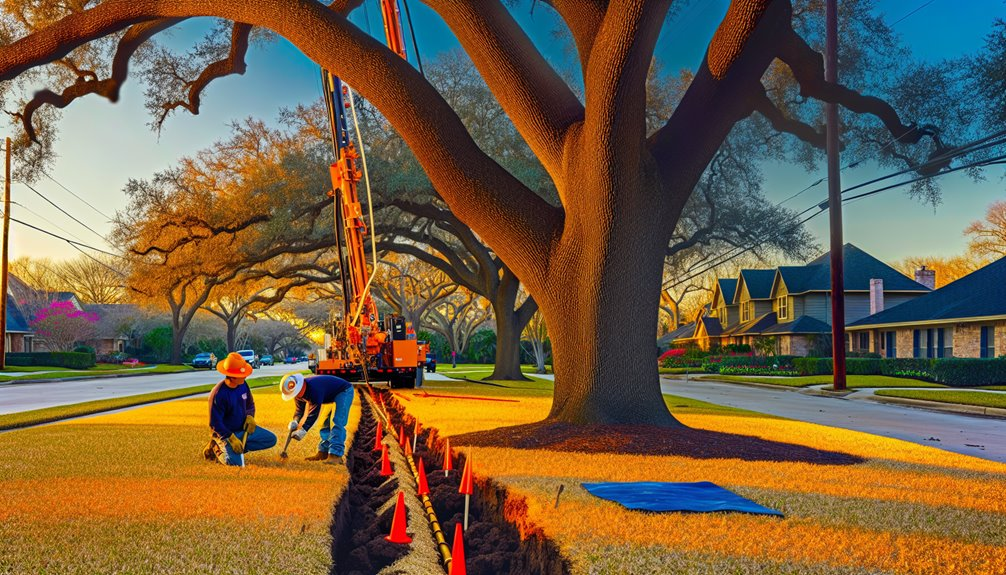
Because tree protection depends on timely decisions, you establish a clear chain of command that puts the project arborist at the table with the HDD superintendent and the authority having jurisdiction.
You align arborist coordination with daily tailboards, white-line paths, and pre-bore root-zone confirmations.
You set inspection scheduling so the inspector verifies setbacks, fluid management, and matting before rods advance.
Everyone shares one map, one vocabulary, and one stop-work trigger.
- Hold joint kickoff and pre-bore meetings to lock in RPAs, drill depths, slurry plans, and contingency roots-first responses.
- Use real-time messaging to flag steering offsets, frack-out risks, and root encounter thresholds; empower immediate slowdowns.
- Require checklists: tool calibers, annular pressure limits, spoil containment, and post-bore root-zone assessments that close the loop.
Cost, Timeline, and Restoration Advantages Compared to Open Trenching
While open trenching exposes long stretches of critical roots and hardscape, directional drilling concentrates disturbance and lowers total impact costs.
You pay for fewer curb, sidewalk, and lawn removals, and you avoid expensive root-zone remediation. That translates into immediate cost savings and fewer claims tied to tree decline. HDD also shortens traffic control windows and reduces crew hours, improving timeline predictability.
With pre-located utilities and arborist-defined bore paths, you minimize change orders and rework.
Restoration is simpler: compact launch pits replace long trenches, so you re-establish mulch, soil structure, and irrigation with targeted fixes.
Canopy protection remains intact, reducing post-project watering, pruning, and monitoring.
Safety improves too—less open excavation, fewer slip-trip hazards, and lower utility strike risk—so your team, neighbors, and trees stay protected together.
When Homeowners and Municipalities Should Require HDD
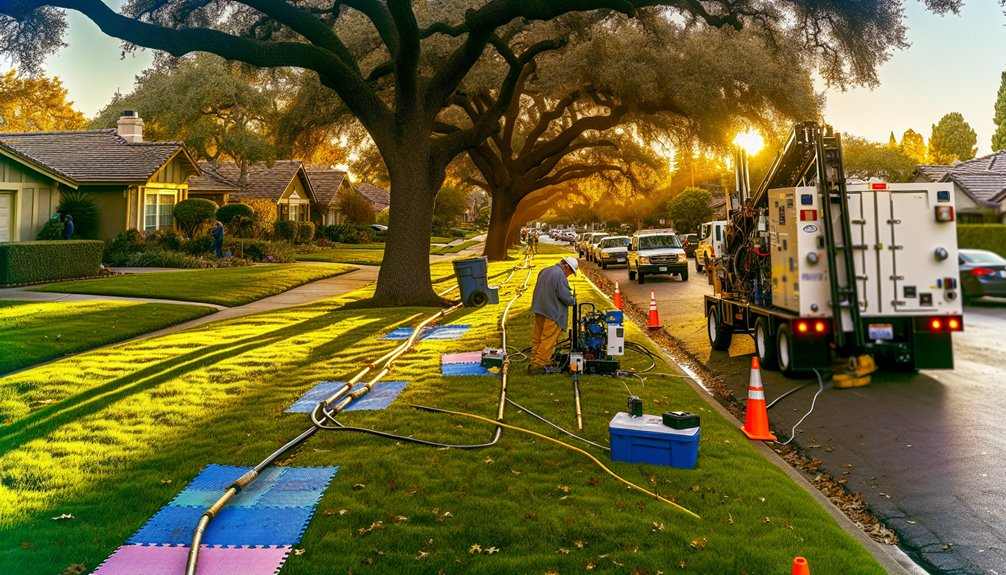
In zones with established canopy roots, protected tree ordinances, or constrained rights‑of‑way, you should mandate horizontal directional drilling (HDD) as the default installation method. Use HDD when trenching risks root plate destabilization, soil compaction, or critical root zone intrusion. Tie requirements to your standards: require HDD for mains and laterals near heritage trees, mandate permits that document bore depth, entry/exit pits, and drilling fluids, and enforce setbacks aligned with trunk diameter and species tolerance.
- Specify minimum bore depths below fine-root strata; verify with as-builts and locating scans.
- Prioritize preservation by sequencing bores outside drip lines and using vac-excavation for potholing.
- Require HDD contingency plans: fluid management, frac-out response, arborist oversight.
When you set clear triggers, you protect canopy continuity and community safety.
Conclusion
As the owner of Boring Bros., I’ve seen firsthand how HDD steers utilities under roots, preserves mycorrhizae, and keeps soils uncompacted — and how mapping CRZs, keeping pressures low, using drilling fluids correctly, and checking paths with arborists protects canopy-to-soil function and reduces hydrofracture risk. When we coordinate crews, use access mats and vacuum excavation, and verify outcomes with post-bore assessments, projects finish faster, restore less, and avoid costly tree decline. For mature trees and tight streetscapes, I recommend specifying HDD and routine inspections to keep landscapes healthy. If you want to learn more or talk through a specific site, visit boringbro.com or give us a call at (954) 639-6167 — we’re always happy to help.

